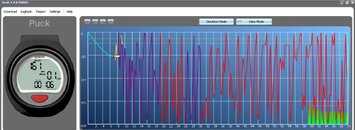If you're using RGBM on any rec computer more than likely this is what you're using
"modified RGBM recreational algorithms (Haldane imbedded with bubble reduction factors limiting reverse profile, repetitive, and multiday diving), as coded into Suunto, Mares, Dacor, ABYSS, GAP, HydroSpace, Plexus decometers, lower an already low DCS incidence rate of approximately 1/10,000 or less. More RGBM decompression meters, including mixed gases, are in the works". (RGBM ALGORITHM OVERVIEW: CONCEPTS, BASES, VALIDATION, TESTING AND REFERENCES. p12). Lets not forget, If they had a fully iterative dual phase version of RGBM there would be no need to add deep stops. Deeper stops would be generated by the RGBM algo alone, to prevent bubbles from reaching a critical volume.
You're right, semantics, for me neo Haldanian means a single phase algo without any hacks to alter the output. However, I also think that Pyle deep stops, (& multiple gasses), on a rec computer are no more than a marketing ploy by manufacturers. After all, if I can blow off the safety stop, a deep stop is not required either. For rec diving I think straight Buhlmann is conservative enough without GF.
I have little interest in Pyle deep stops. For rec dives I'd rather concentrate on my ascent rate. For deco dives I think they're better than nothing, but far to arbitrary .
I'd be happy to use GF on deco dives, but I'd have to do a lot more research to satisfy myself that I was scaling the Lo/Hi correctly for the depth & time of the dive. Then I'd have to spend some time tweaking them for myself.
We've gone off on a bit of a tangent, so to address the OP a little. There are some who have done all the deco training available that I would not care to dive with. There are also those with no training, but who have the information, demeanour & processing power to have at it without formal training. Having said that, I don't think hard or soft overhead diving is a natural & obvious progression for all divers.




